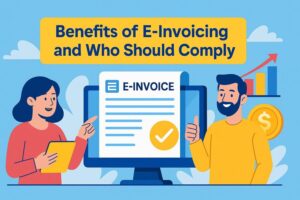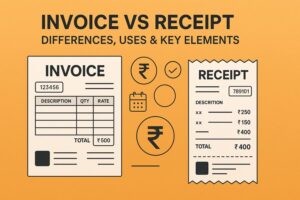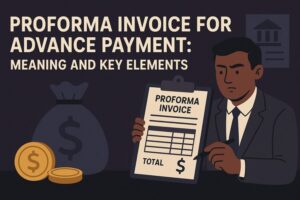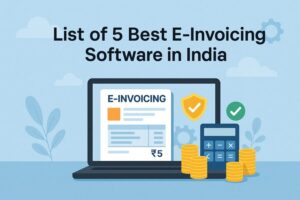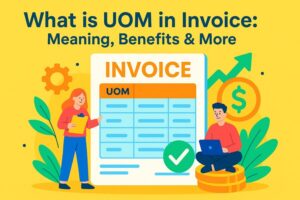Difference Between Proforma Invoice and Invoice & Other Key Details Explained
- 26 Nov 25
- 9 mins
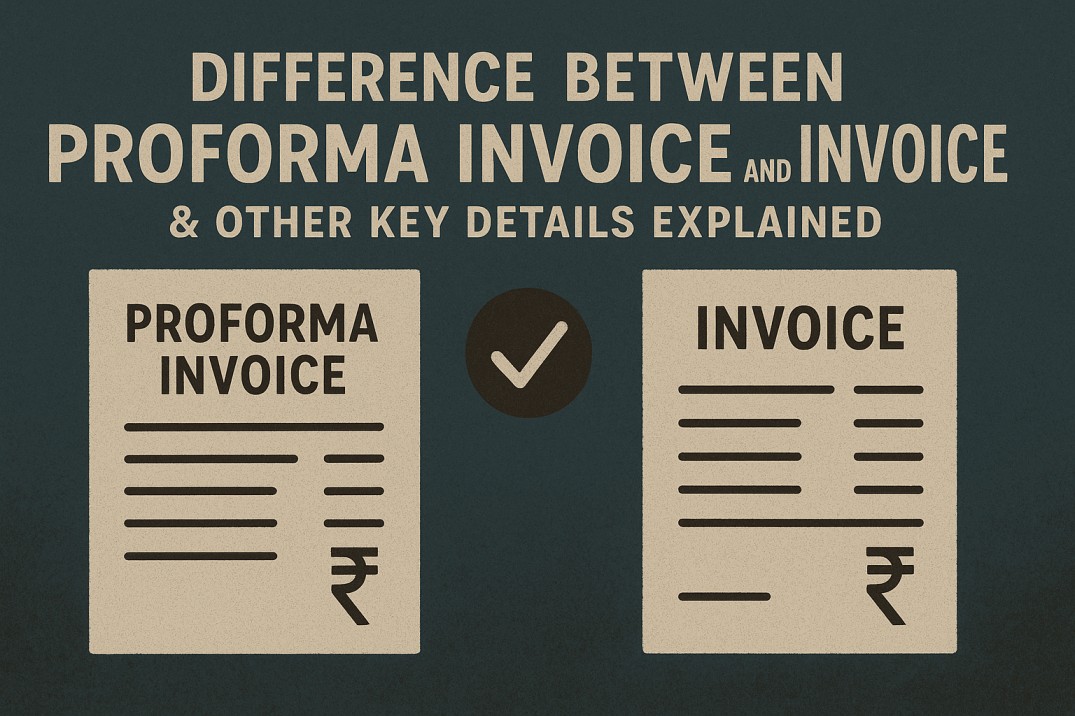
Difference Between Proforma Invoice and Invoice & Other Key Details Explained
- Difference Between Proforma Invoice and Invoice
- What Is Proforma Invoice (PI)?
- Elements of A Proforma Invoice (PI)
- 5 Cases Where Proforma Invoice/Preliminary Invoice is Essential
- Top 5 Benefits of Generating Proforma Invoice
- Are There Any Challenges with Proforma Invoices/Preliminary Invoices?
- What Is an Invoice?
- What are the Elements of an Invoice?
- Common Use Cases for Regular Invoices
- What Are the Top 4 Benefits of Invoices?
- Conclusion
Key Takeaways
- The key difference between proforma invoice and invoice is that a PI is a preliminary quote, while an invoice is the final payment request.
- A proforma invoice is non-binding, whereas a final invoice is legally enforceable.
- Proforma invoices help in budgeting, negotiation and customs clearance, while invoices serve accounting and tax purposes.
- Payment is not required on a proforma invoice, but is mandatory on a final invoice.
- Businesses must understand the difference between proforma invoice and invoice to avoid confusion, delays and disputes.
Have you ever wondered why some businesses send a proforma invoice before the actual invoice? It may seem like a regular invoice; however, it serves a different purpose.
For example, XYZ Company, a consumer electronics company, sent a proforma invoice of ₹5,00,000 for 30 pieces of LCD monitors to a vendor. Later, a final invoice is issued for the same amount. While the former was a quote, the latter was a payment request. The first one is negotiable, the second one is fixed.
Without knowing the difference between proforma invoice and invoice, this may lead to confusion. In this blog, we will provide you with a comprehensive overview of a proforma invoice, starting with its difference from an invoice.
Difference Between Proforma Invoice and Invoice

In one line, a pro forma invoice is a preliminary quote, while an invoice is the final request for payment. But, there is more to it. The following table will help you understand better:
| Particulars | Proforma Invoice | Final Invoice |
| Purpose | To notify the buyer about the prices and other details | To notify the buyer that the payment is due |
| Legally bound? | No | Yes |
| Payment required? | No | Yes |
| Financially recorded? | No, sometimes for internal audits | Yes |
| Issuance time | Before the delivery of goods and services | After the delivery of goods and services |
| Usage by customs authorities | Yes, for estimation | Yes, for final documentation |
| Negotiability | Yes | No |
Let us understand the difference using real-life examples:
- Proforma Invoice Number: 098XXCXXXX
Proforma Invoice Date: 02.07.2025
Seller Details: ABC Textiles Private Limited. (India)
Buyer Details: Mark Wearables Limited (UK)
Description of Goods/Services: 1000 Cotton T-shirts at ₹250 each
Total Estimation: ₹2,50,000
Shipping Charges: ₹10,000
GST and Custom Details
Delivery Terms: Free on Board (Delhi)
Payment Currency: INR (₹)
Validity: 15 days
Additional Terms and Conditions, if any
This PI will allow Mark Wearables Limited to confirm the deal and initiate the customs clearance process. The buying company does not have to pay at this stage.
Note: The above-mentioned PI is a general structure to help you understand. Many sellers also include HSN, GSTIN and SAC details in proforma invoices, although these details are optional.
- Final Invoice Invoice Number: 12345678XXXXXXXX (Max. 16 characters)
Invoice Date: 28.07.2025
Seller Details: Graphic Designer (freelance) (PAN number and contact details are needed here)
Buyer Details: IJK Marketing Agency (business address and contact details are needed here)
Description of Goods/Services: Designing the company logo
Service Cost: ₹15,000
GST: ₹15000 x 18% = ₹2,700
Total Due Amount: ₹17,700
Payment Due in: 15 days
Payment Method: Bank transfer
The above-mentioned invoice serves as a legal payment request. It can be used for tax filing and business records.
💡For your invoice generation needs, use the PICE App.
What Is Proforma Invoice (PI)?
A proforma invoice (PI) is basically an early version of an actual invoice. The seller issues it to provide a preview of the offered goods and services, along with their estimated cost to the buyer. Similar to an actual invoice, a proforma invoice contains the basic details of the deal, including the estimated cost, product details and payment terms.
The primary purpose of sending a proforma invoice is to establish an agreement between both vendors about what is being sold and at what cost. The benefits of this preliminary invoice are manifold. It avoids misunderstanding and maintains transparency, particularly in the cross-border sales process.
Elements of A Proforma Invoice (PI)
- Invoice Number and Date: Every proforma comes with a unique serial number and date for seamless tracking. Numbering a PI allows businesses to keep track of it during internal audits.
- Description of Goods or Services: PI basically itemises all the upcoming deliverables. Thus, it possesses specific relevant details of the service or goods (eg, quantity, weight).
- Estimated Costs: The detailed breakdown of the cost of the offerings is also listed in a proforma invoice. It is important to note that the cost mentioned in a PI is an estimate. If the buyer wants, he/she can negotiate the prices.
- Payment Terms: The seller mentions specific transactional terms, such as the mode of payment and due date, in a PI. Although payment is not due on a proforma invoice.
- Validity Period: Every PI comes with an expiry date. This validity period depends on the sellers.
- Terms and Conditions: If the seller has any particular conditions regarding the return and delivery terms, a PI must also shed light on that.
- Currency: This is particularly important for international transactions. A PI also specifies the payment currency to avoid confusion regarding payment and conversion rates.
- Proforma Invoice Label: At the top of the document, the term ‘Proforma Invoice’ must be mentioned to prevent it from being mistaken for a final invoice.
5 Cases Where Proforma Invoice/Preliminary Invoice is Essential
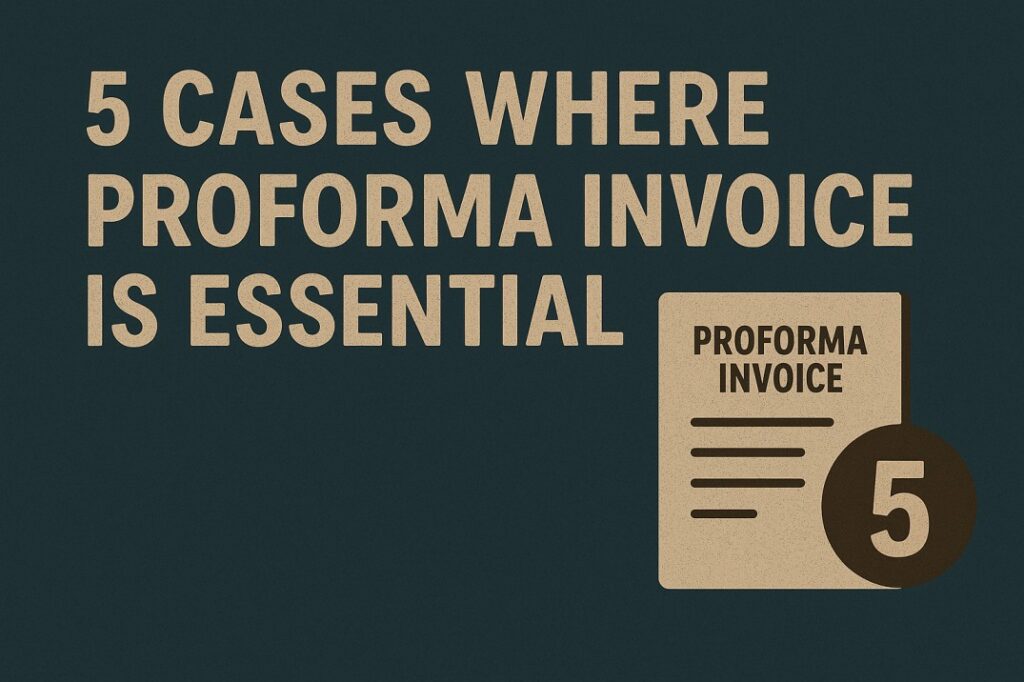
- International Trade: In cross-border transactions, the significance of a proforma invoice is optimum. It helps to inform the buyer about the costs, shipping and customs details before dispatching goods/offering services.
- Pre-Payment Arrangements: When the client asks for a quote, the seller creates a proforma to keep the buyer updated and arrange pre-payment options, if needed.
- Customs Clearance: Some countries require a PI for customs clearance during import/export trades.
- Internal Procurement Approval: Though PI is not legally bound, it helps large companies in budgeting and internal audits before placing official orders.
- Negotiation Phase: Since PI offers cost estimation, unlike the final invoice, it is flexible. Buyers can negotiate with the offered price and settle for a price that is profitable for both.
Top 5 Benefits of Generating Proforma Invoice
- Improved Clarity: PI sets clear expectations for the buyer as well as the seller before delivering the goods or services.
- Hassle-free International Trade: A PI helps both vendors to settle with duties, taxes, and customs documentation beforehand.
- Budget Planning: Since it provides quotes in advance, buyers can arrange funds, avoiding payment delays.
- Seamless Internal Processes: A PI serves as a useful financial record for pre-approvals and decision-making.
- Disputes Prevention: PI acts as an agreed proof about the terms and conditions of the trade.
Are There Any Challenges with Proforma Invoices/Preliminary Invoices?
The most significant challenge with proforma invoice that sellers often encounter is its legal limitation. Since PI is a non-binding record, it leads to frequent payment disputes. Interestingly, the story does not end there! Take a look at some of the additional challenges:
- Inaccurate information in PI can lead to serious misunderstanding
- Discrepancy between proforma and the final invoice delays the payment
- Since PI is not an official record, it can not be used in tax filing.
What Is an Invoice?
A standard invoice is a legal document issued by a seller to a buyer requesting payment for goods or services delivered. It includes the amount due, payment terms and other contractual details. Unlike a PI, it serves as an official financial transaction record and must be recorded in the company’s accounting books.
What are the Elements of an Invoice?
Generally, an invoice contains the following details:
- Invoice Number and Date: Each invoice must carry a unique number and documentation date for better clarity.
- Seller and Buyer Information: Legal names of both the vendors along with their contact details, person and business PAN numbers, business address and GSTINs must be present in an invoice.
- Description of Goods/Services: Sellers must mention a detailed list of delivered goods and services.
- Total Amount Due: A final invoice consists of the total amount that the buyers owe, including any applicable taxes.
- Due Date: Every invoice comes with a payment deadline by which the buyer must pay.
- Terms and Conditions: Payment-related terms, such as late payment penalties, return policies also present in an invoice.
Common Use Cases for Regular Invoices
Every B2B seller creates regular invoices; however the following use cases are most common:
- Freelancers: Freelancers issue invoices to clients for project-based work after completion.
- Small Businesses: SMEs create regular invoices after all kinds of product or service sales.
- Contractors: Contractors and construction firms issue invoices as part of phased payments.
What Are the Top 4 Benefits of Invoices?
- Legally Enforceable: Invoices serve as legally applicable proof of agreement and due payment.
- Improved Cash Flow: Invoices help businesses to stay on track with timely cost recovery and revenue collection.
- Essential for Accounting: Regular invoices are the most important financial document for revenue monitoring and tax filings.
- Brand Reliability: A standardised invoicing enhances the brand image, imparting credibility and trust in the seller-buyer relationship.
Conclusion
Though both contain similar details, they serve different purposes in business transactions. Knowing the difference between proforma invoice and invoice is essential for setting clear expectations before and after a sale. You can refer to the format above while creating your PI or final invoice for better accuracy and compliance.
 By
By 






